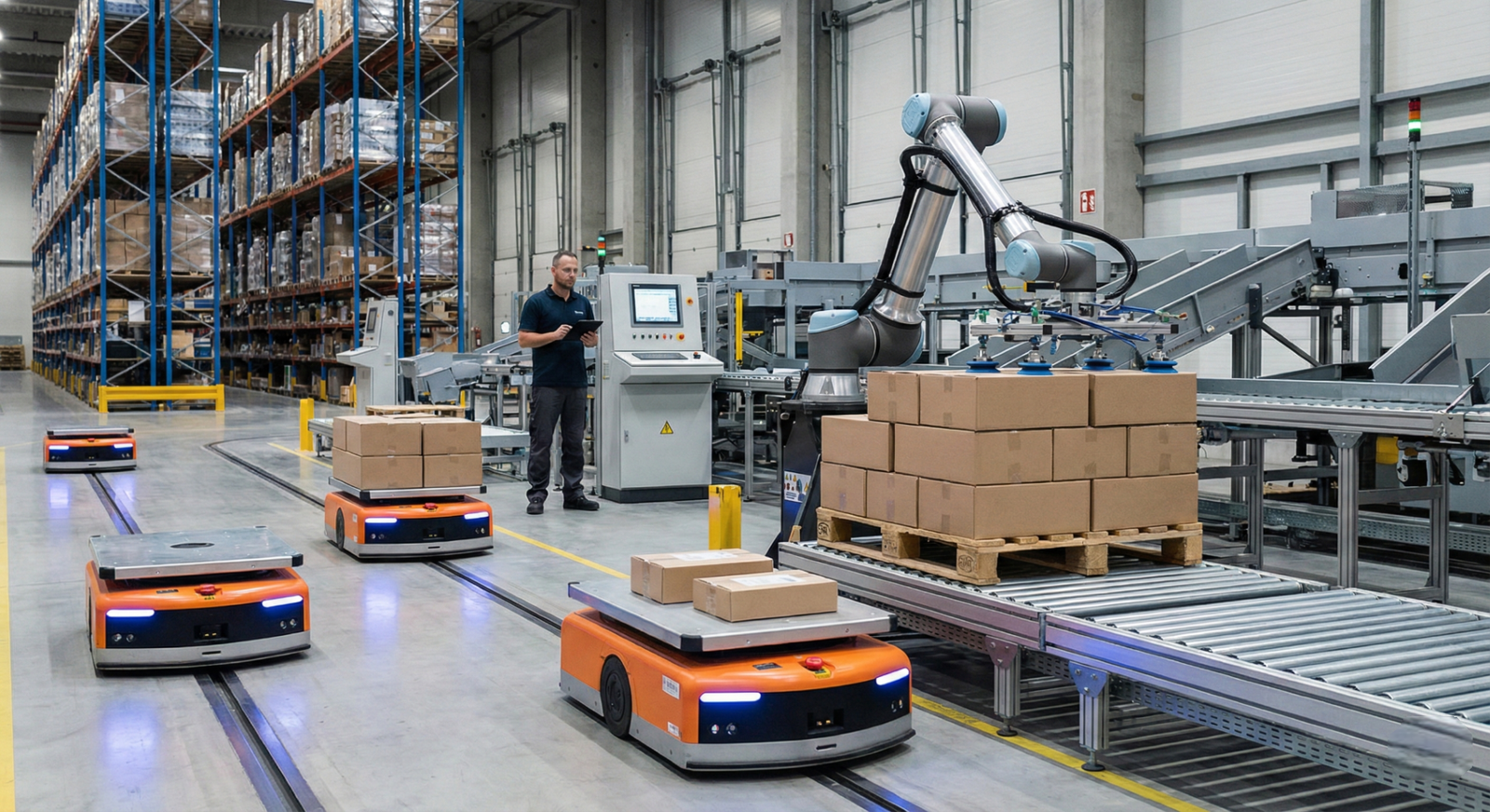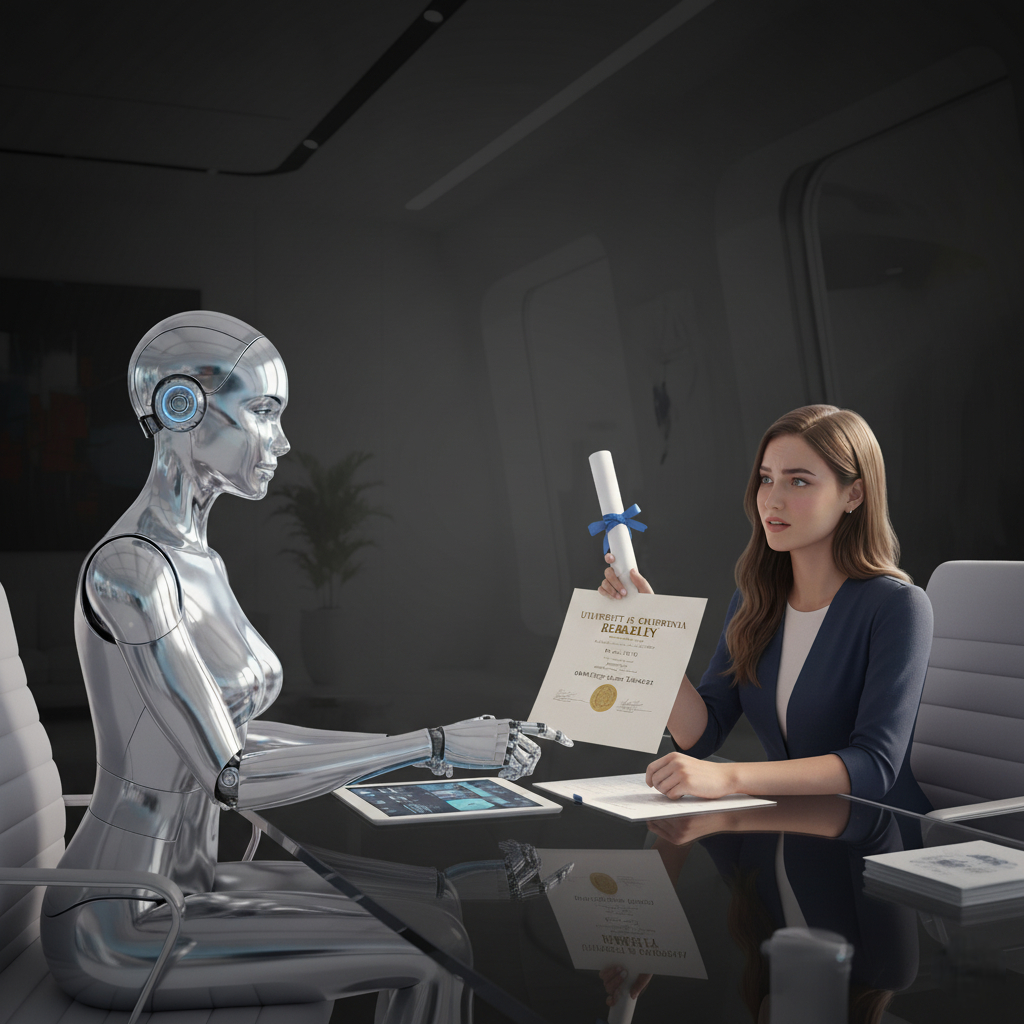Key Takeaways
- AI automation combines software speed with the decision-making power of artificial intelligence.
- Unlike old systems, it can handle “messy” data like emails, images, and spoken language.
- It acts like a smart junior employee that learns from experience rather than just following rigid rules.
- Humans are still essential to set goals, supervise quality, and handle complex problems.
You have probably heard the buzzwords “AI” and “automation” used interchangeably, but they are not the same thing. For decades, businesses have used automation to speed up simple tasks. Now, artificial intelligence is changing the game. It turns standard software into a system that can think, learn, and make decisions.
This is not just about robots in a factory. It is about software that can read your emails, schedule your meetings, and even predict when a machine needs repair. This guide will explain exactly what AI automation is, how it differs from the technology of the past, and what it means for the future of work.
Understanding AI Automation
To understand this concept, you have to look at the two parts separately and then see what happens when they come together.
Defining the Concept: Software + Intelligence
AI automation is often called “intelligent automation.” It is the result of combining two powerful technologies:
- Automation: This is the “muscle.” It refers to software or machines that perform tasks automatically without a human clicking every button. Think of a macro in a spreadsheet that copies data from one column to another. It follows a strict script.
- Artificial Intelligence (AI): This is the “brain.” It refers to systems that can learn from data, understand human language, recognize images, and make predictions.
When you combine them, you get AI Automation. It is a system that can perceive the world around it, think about what it sees, and then act on it. This is often described as “automation with brains.” It does not just blindly follow rules; it makes decisions based on the data it receives.
How It Differs from Simple Macros
Imagine you have a robotic arm in a factory.
- Traditional Automation: The arm moves a box from Point A to Point B. If the box is slightly out of place, the arm grabs thin air, and the process fails.
- AI Automation: The arm has a camera (eyes) and software (brain). It sees the box is out of place, adjusts its grip, picks it up, and moves it.
This shift changes everything. We are moving from rigid scripts to flexible systems that can handle the messiness of the real world.
How AI Automation Works
AI automation works in a cycle that mimics how a human processes work. It involves three main steps: Input, Interpretation, and Action.
Step 1: Taking in Messy Input (Data Collection)
In the past, computers needed clean, structured data. They needed rows and columns in a database. AI automation can handle “unstructured” data. This includes:
- Text: Emails, PDF invoices, and chat logs.
- Visuals: Images, scanned documents, and video feeds.
- Audio: Voice commands and recorded calls.
Modern systems can take in this messy input and prepare it for processing, something traditional software could never do efficiently.
Step 2: Interpreting the Data (The AI Brain)
Once the system has the data, it uses AI technologies to understand it.
- Natural Language Processing (NLP): This allows the computer to read text and understand the intent behind it. For example, it knows the difference between an angry customer email and a happy one.
- Computer Vision: This allows the system to “see” images. It can look at a scanned receipt and identify which part is the date, the total cost, and the vendor name.
- Machine Learning (ML): The system compares the new data to thousands of past examples. It uses patterns to make a decision or a prediction.
Step 3: Deciding and Acting (Execution)
After understanding the data, the automation takes over to finish the job.
- Routing: Sending a customer complaint to the right department.
- Approving: Automatically approving a loan application if the risk score is low enough.
- Escalating: Alerting a human manager if a factory machine is vibrating dangerously.
Instead of a human reading, thinking, and clicking, the system handles the entire chain.
AI Automation vs. Traditional Automation
It is helpful to compare the old way of doing things with the new way. Traditional automation is often called RPA (Robotic Process Automation). While useful, it has limits.
| Feature | Traditional Automation (RPA) | AI Automation |
|---|---|---|
| Primary Rule | “If A, then do B.” (Rigid rules) | “Look at data, then decide.” (Flexible) |
| Data Type | Needs structured, clean data (forms). | Handles unstructured data (emails, PDFs). |
| Adaptability | Breaks if the input format changes. | Adapts and learns from new examples. |
| Intelligence | Blindly executes instructions. | Makes “soft” decisions and predictions. |
The Limits of “If This, Then That” Rules
Traditional automation follows a strict path. If you change the layout of a digital form by one inch, a traditional bot might crash because it cannot find the “Submit” button. It is brittle.
Handling Unstructured Data and Changes
AI automation thrives on unstructured content. It does not need a fixed template. You can send it invoices from 50 different vendors, all with different layouts. The AI looks for the concept of a “Total Amount” or “Due Date,” regardless of where it is located on the page.
The Ability to Learn and Improve
Perhaps the biggest difference is learning. Traditional automation performs exactly the same way on day 1,000 as it did on day 1. AI automation improves. As it processes more data, it recognizes patterns better. It acts like a junior employee who gets better with experience, although it still operates within safety guardrails set by humans.
Real-World Examples of AI Automation
You are likely already interacting with AI automation without realizing it. Here is how it looks in everyday life.
Smarter Customer Support Bots
We have all dealt with frustrating “dumb” chatbots that only give pre-written answers. AI automation powers the new generation of bots. These systems use Natural Language Processing to actually understand your problem.
- Example: You ask a bank bot about a charge. It checks your transaction history, identifies the charge, and offers to file a dispute—all without a human agent. This routes customers efficiently, saving human agents for complex emotional issues.
Intelligent Document and Email Processing
Businesses drown in paperwork. AI tools help manage this flood.
- Example: An insurance company receives thousands of claim emails. AI reads the emails, extracts the policy number and photos of the accident, enters the data into the system, and creates a draft response. These tools extract key fields like names and dates automatically.
Personal Assistants and Scheduling
Smart assistants like Siri or Google Assistant are forms of AI automation.
- Example: In a business setting, “smart” assistants can look at your raw data and generate a sales report, or automatically schedule a meeting by scanning the calendars of five different people to find an open slot.
Innovation in Factories and Logistics
In the physical world, AI automation steers robots and drones.
- Example: A logistics system predicts that a delivery truck will be late due to weather. It automatically reroutes other trucks to cover the gap and updates the warehouse schedule. This allows for real-time decisions on speed and routing.
The Future of Work with AI
Many people worry about what this means for their jobs. The consensus among experts is that work will change, not disappear.
Moving Away from Routine Data Entry
The most immediate effect is the disappearance of “boring” work. Tasks like data entry, simple report writing, and standard approvals are perfect for AI. Industry analysis suggests that these routine digital tasks will vanish from human to-do lists over the coming years.
The Shift to Supervision and Strategy
Humans will move from doing the work to supervising the system.
- The “Human-in-the-loop”: You might spend your day reviewing the difficult cases the AI couldn’t figure out (edge cases).
- Strategy: You will focus on creative problem solving, interpersonal relationships, and setting the goals for the AI. This shift allows workers to handle exceptions and do more strategic tasks.
Autonomous Machines in the Physical World
We will see more machines making local decisions.
- Self-Optimizing Buildings: Office buildings will adjust their own heating, cooling, and security based on how many people are inside.
- Delivery: Drones and autonomous vehicles will handle the “last mile” of delivery, making real-time decisions on the best path to take.
Common Misconceptions (What It Is Not)
There is a lot of hype around AI, so it is important to separate fact from fiction.
Myth: It Is Human-Level Intelligence
AI automation is not “General Intelligence.” It cannot write a novel, fix a car, and cook dinner. It is “narrow” and task-specific. Current systems are designed for specific jobs, not to take over the world.
Myth: It Works Like Magic Without Humans
You cannot just install AI and walk away. Humans are needed to design the goals, set the boundaries, and check the quality. It is important to remember that humans must still design the workflows and handle the exceptions.
Myth: It Will Destroy All Jobs
While some tasks will go away, entire professions rarely disappear overnight. Research suggests that AI tends to reshape jobs by removing the repetitive parts. It changes the skills required for the job rather than eliminating the job itself.
Conclusion
AI automation represents a significant shift in how we work. It is the transition from humans using tools to complete a task, to humans supervising systems that do the heavy lifting. By combining the speed of automation with the learning ability of AI, businesses can process messy data, make faster decisions, and free up humans for creative and strategic work.
As these tools become more common, the most valuable skill for workers will be the ability to work with these systems—guiding them, correcting them, and using them to solve bigger problems.
Frequently Asked Questions (FAQ)
- What is the main difference between RPA and AI Automation?
RPA (Robotic Process Automation) follows strict, pre-defined rules and works best with structured data. AI Automation uses machine learning to handle messy, unstructured data and can make decisions based on patterns rather than just rigid rules.
- Will AI automation replace my job?
It is unlikely to replace your entire job, but it will change it. AI automation targets repetitive, routine tasks like data entry. This allows workers to focus on more complex, creative, and interpersonal tasks.
- Does AI automation require coding skills to use?
Not always. Many modern AI automation tools are “low-code” or “no-code.” This means business users can set up workflows using drag-and-drop interfaces, though understanding the logic behind the process helps.
- Can AI automation handle handwritten documents?
Yes. Using technology called OCR (Optical Character Recognition) combined with AI, these systems can read handwriting, understand the context, and convert it into digital text.
- Is AI automation expensive?
Initially, it can be. However, the cost is often recovered quickly through time saved and reduced errors. As the technology becomes more common, it is becoming accessible even to small businesses.





